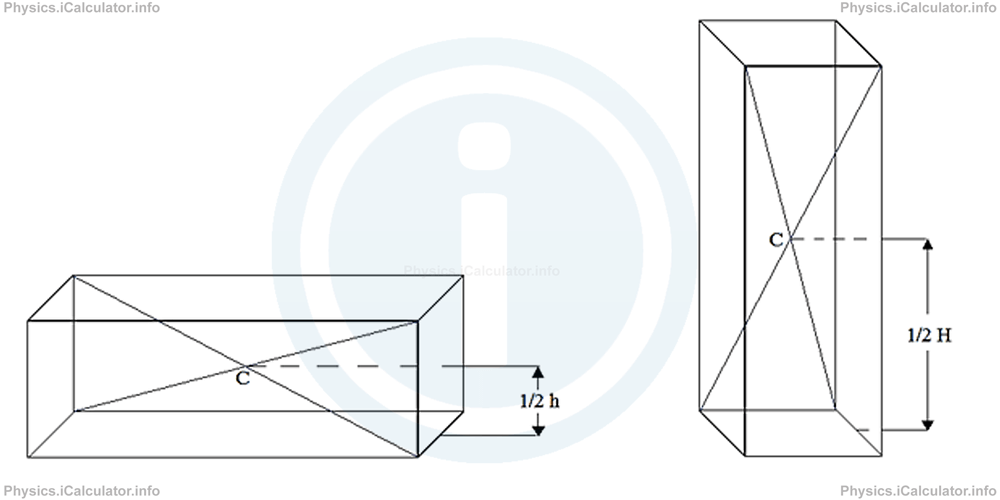Menu
Physics Lesson 6.1.5 - More Stable and Less Stable within Neutral
Please provide a rating, it takes seconds and helps us to keep this resource free for all to use
Welcome to our Physics lesson on More Stable and Less Stable within Neutral, this is the fifth lesson of our suite of physics lessons covering the topic of Centre of Mass. Types of Equilibrium, you can find links to the other lessons within this tutorial and access additional physics learning resources below this lesson.
More Stable and Less Stable within Neutral
Consider a cuboid or a cylinder. They both represent examples of neutral equilibrium in all positions because centre of gravity is at the same level as half of object's height. However, there is a big difference regarding the equilibrium of these object dictated by the position in which they are placed on the ground, although in all cases this equilibrium is neutral. Look at the figures below.

In both figures the equilibrium is neutral because the centre of gravity is at halh of the height. However, if the object is placed as shown in the first figure, it is more stable than if it is placed as shown in the second figure because in the first case, the centre of gravity is nearer to the ground. Therefore, there exists a kind of classification regarding stability even within the same category of equilibrium.
In summary, the equilibrium or stability of objects depends of three factors:
- The position of centre of mass in respect to half of an object's height (stable, unstable, neutral),
- The position of normal line drawn drawn from the centre of mass in respect to the object's base [inside the base - stable (the object stands still), outside the base - unstable (the object falls down)], and
- The position of centre of gravity in respect to the ground (higher the centre of gravity, less stable the object is).
You have reached the end of Physics lesson 6.1.5 More Stable and Less Stable within Neutral. There are 6 lessons in this physics tutorial covering Centre of Mass. Types of Equilibrium, you can access all the lessons from this tutorial below.
More Centre of Mass. Types of Equilibrium Lessons and Learning Resources
Whats next?
Enjoy the "More Stable and Less Stable within Neutral" physics lesson? People who liked the "Centre of Mass. Types of Equilibrium lesson found the following resources useful:
- Neutral Feedback. Helps other - Leave a rating for this neutral (see below)
- Centre of Mass and Linear Momentum Physics tutorial: Centre of Mass. Types of Equilibrium. Read the Centre of Mass. Types of Equilibrium physics tutorial and build your physics knowledge of Centre of Mass and Linear Momentum
- Centre of Mass and Linear Momentum Revision Notes: Centre of Mass. Types of Equilibrium. Print the notes so you can revise the key points covered in the physics tutorial for Centre of Mass. Types of Equilibrium
- Centre of Mass and Linear Momentum Practice Questions: Centre of Mass. Types of Equilibrium. Test and improve your knowledge of Centre of Mass. Types of Equilibrium with example questins and answers
- Check your calculations for Centre of Mass and Linear Momentum questions with our excellent Centre of Mass and Linear Momentum calculators which contain full equations and calculations clearly displayed line by line. See the Centre of Mass and Linear Momentum Calculators by iCalculator™ below.
- Continuing learning centre of mass and linear momentum - read our next physics tutorial: Determining the Centre of Mass in Objects and Systems of Objects
Help others Learning Physics just like you
Please provide a rating, it takes seconds and helps us to keep this resource free for all to use
We hope you found this Physics lesson "Centre of Mass. Types of Equilibrium" useful. If you did it would be great if you could spare the time to rate this physics lesson (simply click on the number of stars that match your assessment of this physics learning aide) and/or share on social media, this helps us identify popular tutorials and calculators and expand our free learning resources to support our users around the world have free access to expand their knowledge of physics and other disciplines.